The historical places in China reveal how emperors ruled, artists created, and philosophies shaped entire generations. From sprawling ancient cities with high stone walls to intricate cave temples carved into desert cliffs, every site is deeply rooted in a moment that changed history. These places are more than physical remains; they carry stories of dynasties, spiritual beliefs, and the rise of Chinese civilization. Travelling to them is not just sightseeing; it’s a step into the rhythm of a culture that has stood tall for thousands of years. Across deserts, mountains, and city centres, these landmarks hold firm as reminders of the country’s strength, resilience, and creativity.
The 12 Most Iconic Historical Places In China
These historical places in China reflect the country’s rich legacy, each one shaped by rulers, faith, and timeless artistry. Here are 13 destinations where the past still feels alive.
1. Great Wall Of Badaling, Beijing
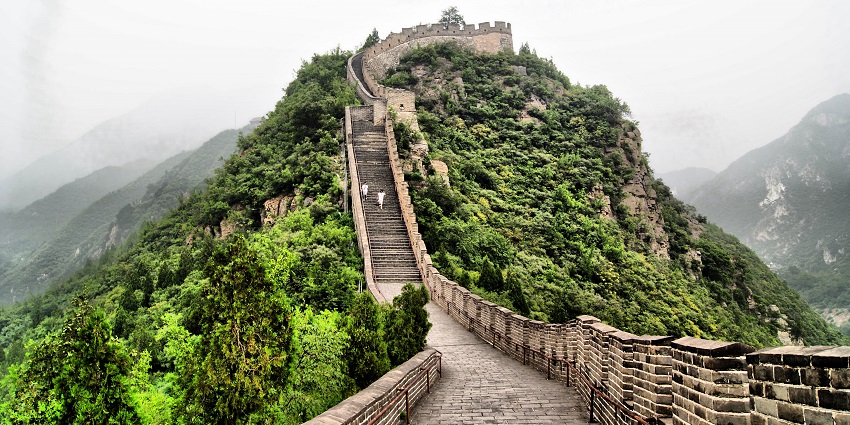
Photo: Haluk Comertel / Wikimedia Commons
This was once the northern defence line for the Ming capital. The terrain is steep, but the construction is firm, with battlements and towers built to fit the rise and fall of the land. Soldiers stood in those towers, watching for signs of attack. Out of all the historical places in China, this part of the Great Wall is the most visited and the best restored. It became the first section opened to the public and has hosted dignitaries from across the world. Even with the crowds, the scale feels personal; every step makes you think about the people who built it, brick by brick. Badaling may be just a section, but it still shows the wall’s full intent to hold strong against time and threat.
How To Reach: Travel by high-speed train from Beijing North Railway Station or take Bus 877 from Deshengmen
Timings: 7:30 AM – 5:30 PM
Nearby Attractions: Badaling Wildlife Park, Great Wall Museum, Juyongguan Pass
2. The Great Wall Of China
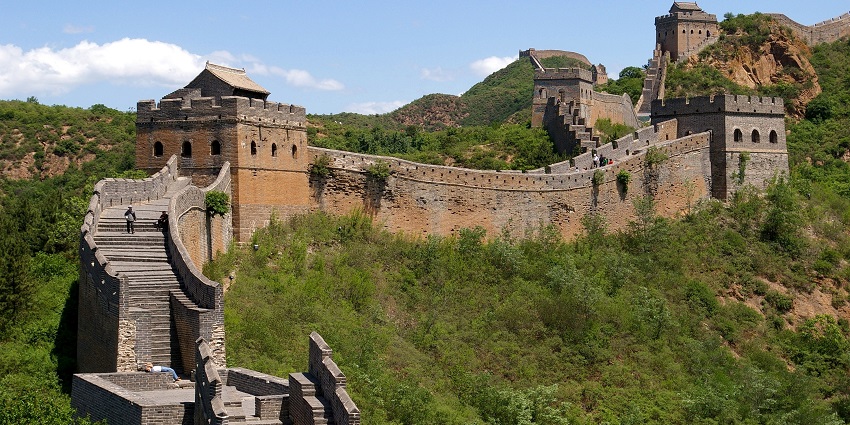
Photo: Jakub Hałun / Wikimedia Commons
Spread across 21,000 kilometres, the Great Wall crosses mountains, deserts, and farmlands, more than just a single line of defence. At Mutianyu, the wall stretches along forested ridges at 540 metres above sea level, with solid stone paths and 23 watchtowers in just over 2 kilometres. Jinshanling is known for its raw beauty, with steep climbs, brickwork from the Ming Dynasty, and towers that remain largely untouched. Simatai is the most dramatic; its highest point stands over 1,000 metres, and parts remain in original, unrestored condition. Among all historical places in China, these areas reflect the wall’s original function, scale, and connection to the land it crosses.
How To Reach: Tour buses and taxis are available from Beijing to Mutianyu, Jinshanling, and Simatai sections
Timings: 7:30 AM – 5:30 PM
Nearby Attractions: Gubei Water Town, Huanghuacheng, Jiankou Wall Trail
3. Forbidden City, Beijing
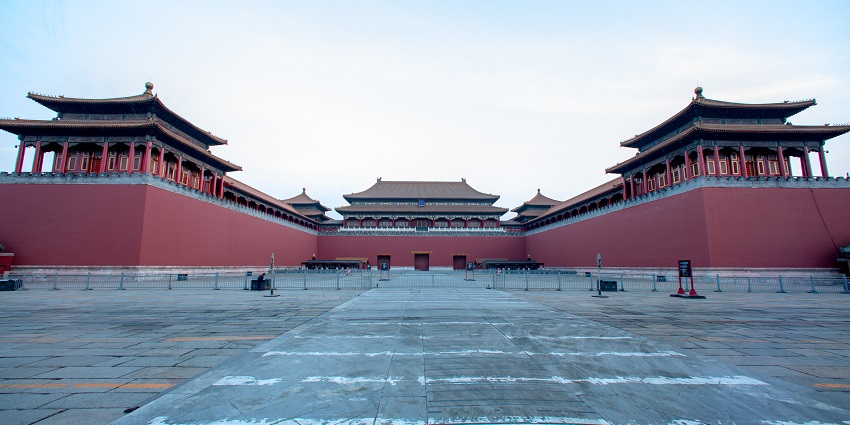
Photo: Morio / Wikimedia Commons
Spanning over 180 acres with more than 8,700 rooms, the Forbidden City is one of the largest palace complexes ever built. Constructed between 1406 and 1420 during the Ming Dynasty, it was the centre of imperial power for nearly 500 years. The architecture is precise and symbolic, with yellow glazed roof tiles for royalty, red walls for happiness, and dragon motifs carved into stone and wood. Key halls like the Hall of Supreme Harmony and the Palace of Heavenly Purity reflect strict ceremonial life and political order. The compound is built along a north-south axis, guarded by thick walls and a moat. Among all historical places in China, this one held absolute power, and its layout reflects control, tradition, and divine rule.
How To Reach: Take Subway Line 1 to Tiananmen East or West Station
Timings: 8:30 AM – 5 PM
Nearby Attractions: Tiananmen Square, National Museum of China, Jingshan Park
4. Terracotta Army, Xi’an
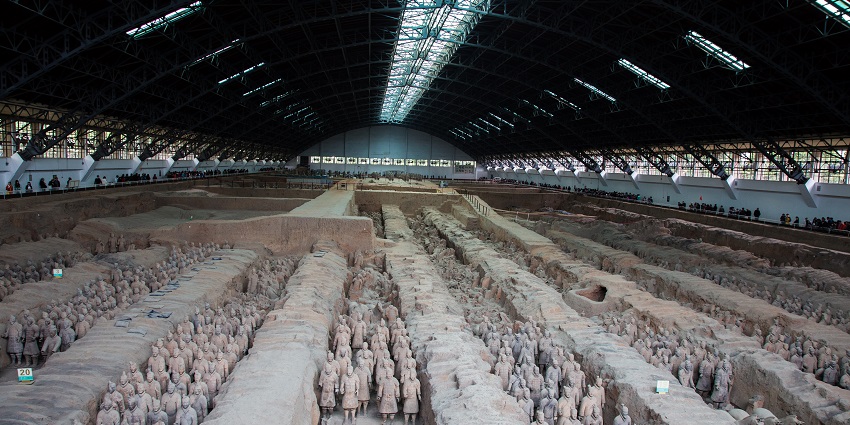
Photo: Jmhullot / Wikimedia Commons
A few kilometres east of Xi’an, rows of clay soldiers stand in silence beneath a large steel-roofed hall. These life-sized figures, over 8,000 in number, were created more than 2,200 years ago to guard the tomb of Emperor Qin Shi Huang. He unified China in 221 BCE and ordered an underground army to protect him in death. Every soldier has a unique face, distinct posture, and individual hairstyle, some wear armour, others hold weapons, and generals stand taller than the rest. Horses, wooden chariots, and even musicians have been uncovered from the three main excavation pits, which span over 16,000 square metres. Discovered accidentally by farmers, this site now ranks among the most astonishing historical places in China, not only for its scale but for the craftsmanship preserved in each statue.
How To Reach: Use Bus 306 from Xi’an Railway Station or hire a taxi
Timings: 8:30 AM – 5 PM
Nearby Attractions: Huaqing Palace, Xi’an City Wall, Banpo Neolithic Museum
5. Mogao Caves, Dunhuang

Photo: Zhangzhugang / Wikimedia Commons
Carved into the cliffs of the Gobi Desert, the Mogao Caves hold over a thousand years of Buddhist art. Work began here in the 4th century, and by the Tang Dynasty, hundreds of caves were filled with frescoes, statues, and manuscripts. Out of more than 700 caves, around 30 are open to visitors. Some chambers are tiny and dark, others stretch high with painted domes and giant Buddhas. The largest statue, a seated Buddha, stands 35 metres tall and still holds its original colour. Many of the murals were created by monks and artisans who painted scenes from the sutras using mineral pigments. The caves also once held the famous Dunhuang manuscripts, sealed away in a hidden chamber for nearly 900 years.
How To Reach: From Dunhuang Airport or railway station, use shuttle buses to reach the site
Timings: 9 AM – 5:30 PM
Nearby Attractions: Crescent Lake, Singing Sand Dunes, Dunhuang Museum
6. Temple Of Heaven, Beijing
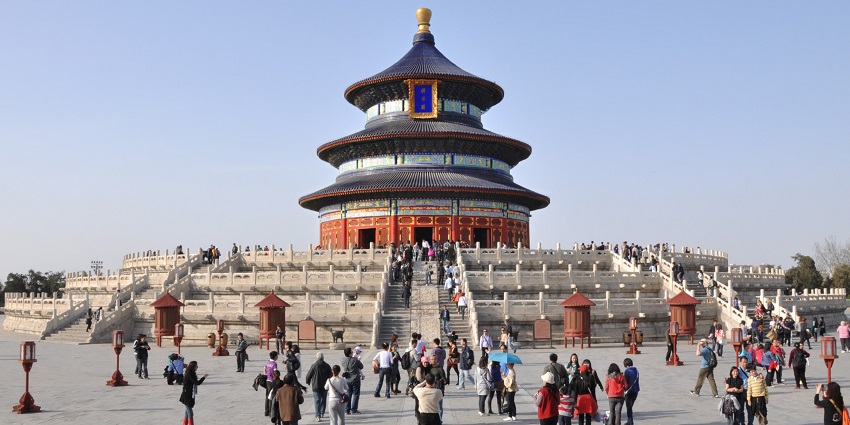
Photo: Fong Chen / Wikimedia Commons
Step inside the outer gate and everything feels precise, balanced, and quiet. Built in 1420 during the Ming Dynasty, the Temple of Heaven was not a palace or home, it was where emperors came to pray for good harvests. The Hall of Prayer for Good Harvests, the temple’s most recognisable structure, is a perfect circle built entirely of wood, without nails. It stands on a triple-tiered marble base and is surrounded by a large park lined with cypress trees. Every part of the layout reflects the harmony between heaven and earth, its colours, orientation, and even the sound of footsteps inside the Echo Wall. Only the emperor and a select few officials were allowed here in imperial times. Visitors now walk the same stone paths once reserved for prayers to the sky.
How To Reach: Use Subway Line 5 and get off at Tiantan Dongmen Station
Timings: 6 AM – 10 PM
Nearby Attractions: Pearl Market, Red Theatre, Longtan Park
7. Summer Palace, Beijing
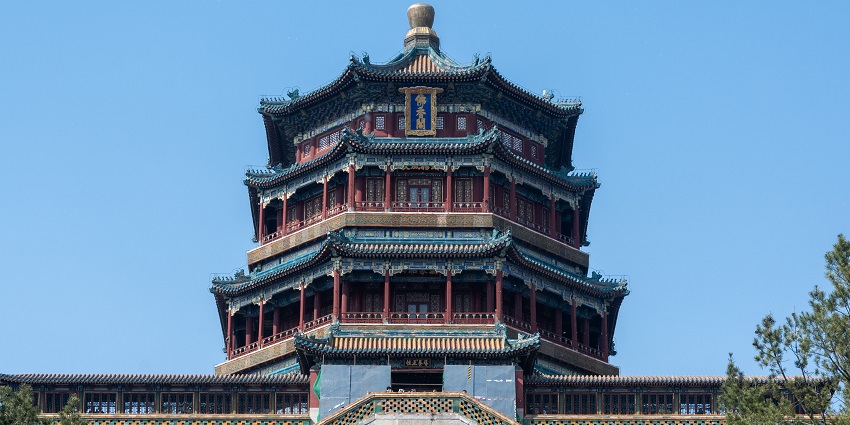
Photo: xiquinhosilva / Wikimedia Commons
The Summer Palace was never meant to impress with power; it was built to bring calm. Spread across nearly 300 hectares, most of it taken up by water, this space gave Qing emperors a place to escape the capital’s heat. Kunming Lake reflects the hills behind it, where stone walkways and temples sit along gentle slopes. The design isn’t rigid like many imperial sites. Here, pavilions were placed to follow the curves of the land. You’ll find the Long Corridor painted with scenes from legends and the Marble Boat fixed in place near the shore. The Tower of Buddhist Incense stands higher, watching over the whole scene. It was burned in war and rebuilt again, but much of what you see still follows the original layout from the 1700s.
How To Reach: Ride Subway Line 4 to Beigongmen Station for the north gate entrance
Timings: 6:30 AM – 6 PM
Nearby Attractions: Old Summer Palace, Fragrant Hills, Zizhuyuan Park
8. Leshan Giant Buddha, Sichuan
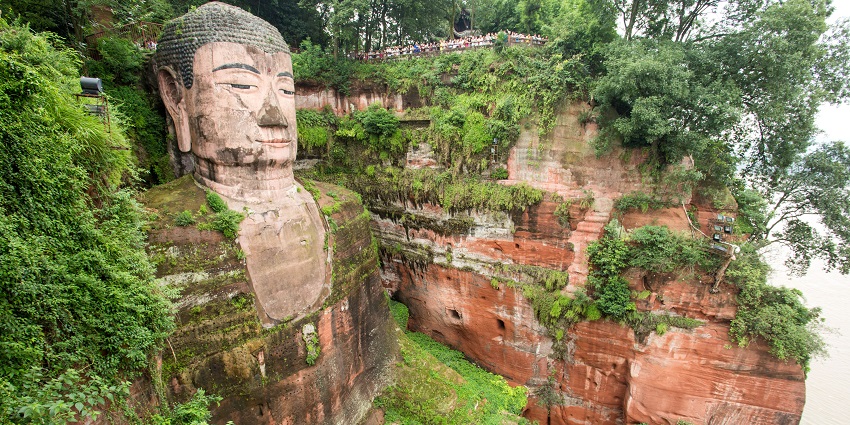
At the meeting point of three rivers, a single stone figure watches the water flow beneath his feet. Carved into a cliff face during the Tang Dynasty, the Leshan Giant Buddha stands 71 metres tall, making it the largest stone Buddha in the world. Work began in 713 CE, led by a monk named Haitong, who hoped the statue would calm dangerous river currents. His plan wasn’t just spiritual, the debris from carving the statue actually changed the water’s course. The Buddha’s expression is calm, the folds of his robe exact, and his massive feet can seat dozens of people. You can walk down a narrow path along the cliff to reach the base or view it from a boat. As one of the most enduring historical places in China, the statue speaks to a time when religion, engineering, and nature were all bound together by patience and vision.
How To Reach: Travel via high-speed train to Leshan Station, then take a bus or taxi
Timings: 8 AM – 5:30 PM
Nearby Attractions: Mount Emei, Lingyun Temple, Wuyou Temple
9. Pingyao Ancient City, Shanxi
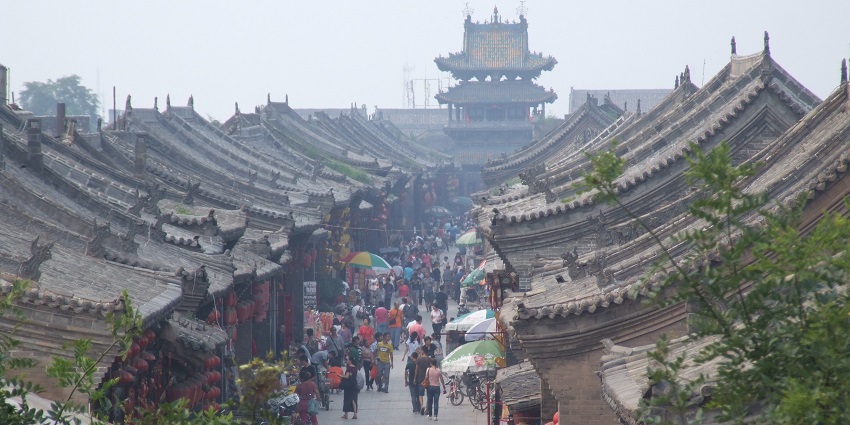
Photo: Nicor / Wikimedia Commons
Stone streets, weathered wooden doors, and grey brick walls lead you into a world shaped by merchants, guards, and scholars. Founded around the 14th century, Pingyao grew into a major financial centre during the Qing Dynasty. It was home to China’s first bank, Rishengchang, which began issuing drafts long before modern paper money. The city’s walls stretch for over six kilometres, still intact, with 72 watchtowers and six city gates. Inside, over 300 ancient residences, temples, and courtyards remain as they were. Unlike restored tourist towns, Pingyao still feels lived in with locals riding bikes past tea shops and old stone wells. Out of all the historical places in China, this one holds onto daily life, not just history. The buildings tell you about trade, defence, and ritual without needing a guide to explain every turn.
How To Reach: Board a high-speed train to Pingyao Gucheng Station, then walk or take a tuk-tuk
Timings: 8 AM – 6 PM
Nearby Attractions: Rishengchang Exchange House, Confucius Temple, Ancient Court Office
10. Longmen Grottoes, Luoyang
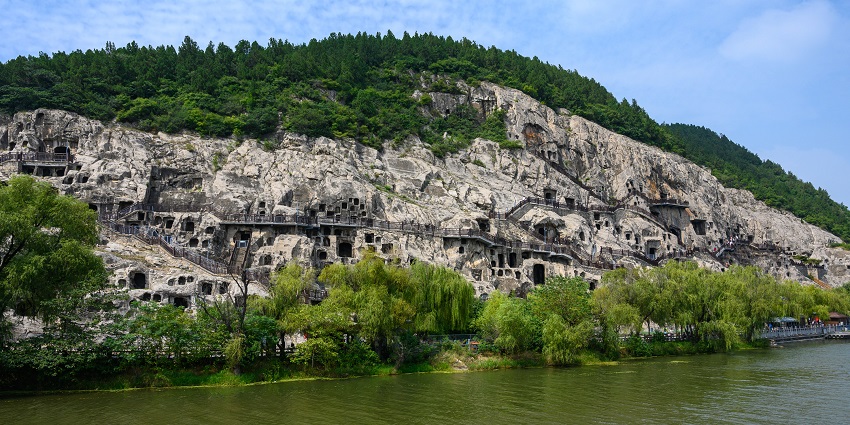
Photo: xiquinhosilva / Wikimedia Commons
Just south of Luoyang, limestone cliffs stretch along the Yi River, carved with thousands of statues that seem to grow from the rock itself. The Longmen Grottoes began under the Northern Wei Dynasty in the late 5th century and continued for nearly 400 years. There are more than 2,300 caves and niches here, housing over 100,000 Buddhist figures. Some are as small as your hand; others tower over 17 metres tall. The Fengxian Temple is the most striking, with its massive seated Vairocana Buddha flanked by heavenly kings and disciples. Every carving, no matter the size, was made by hand and funded by emperors, generals, and commoners alike. Among historical places in China, few show this level of devotion in stone.
How To Reach: Bus 81 or 60 from Luoyang Railway Station leads directly to the site
Timings: 8 AM – 6:30 PM
Nearby Attractions: White Horse Temple, Luoyang Museum, Guanlin Shrine
11. Mount Tai, Taishan, Shandong
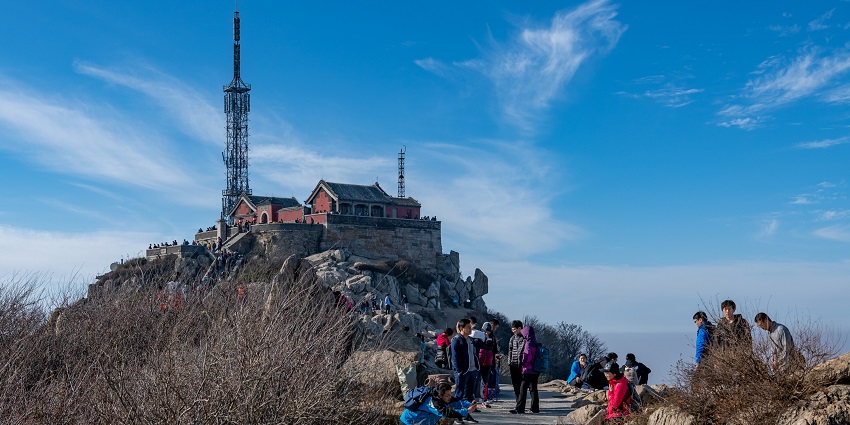
Photo: xiquinhosilva / Wikimedia Commons
Long before there were emperors, this mountain was already sacred. Mount Tai rises over 1,500 metres above sea level and has been a site of worship for more than 3,000 years. From the Zhou Dynasty onward, emperors made pilgrimages here to offer sacrifices to heaven and earth. The mountain is covered with ancient stone inscriptions, weathered stairways, and temples that cling to cliffs. The most famous path, the 7,200-step route from the Red Gate passes through the Middle Gate to Heaven and ends at the South Heaven Gate. Along the way, visitors cross the Azure Cloud Temple and the Jade Emperor Peak, where the sunrise draws crowds at dawn. Among historical places in China, Mount Tai is both a physical and spiritual climb.
How To Reach: Take a high-speed train to Tai’an Station and then a bus or cable car
Timings: 6:30 AM – 5:30 PM
Nearby Attractions: Dai Temple, Red Gate Palace, Azure Cloud Temple
12. Dazu Rock Carvings, Chongqing
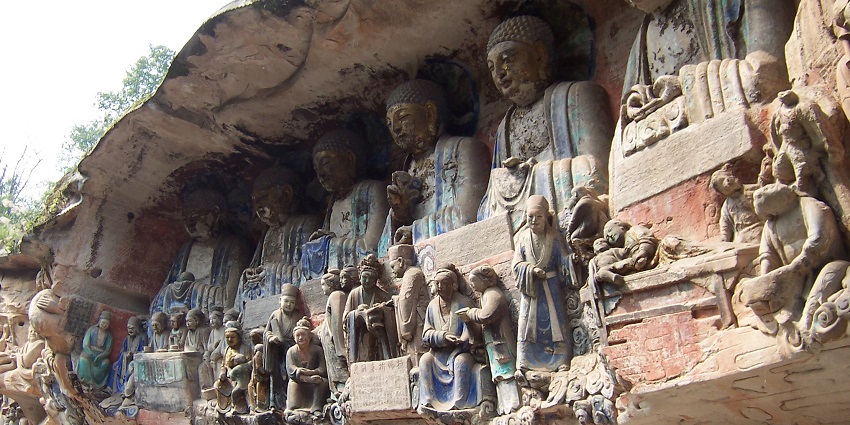
Photo: Truthven / Wikimedia Commons
Tucked into the hills outside Chongqing, the rock carvings of Dazu cover cliffs and caves with scenes that speak of faith, ethics, and daily life. Work began in the late 9th century, during the Tang Dynasty, and continued through the Song period. More than 50,000 statues and over 100,000 characters of inscriptions are spread across 75 protected sites. The carvings at Baoding Mountain are the most detailed here; life-sized figures show Buddhist teachings alongside images of family loyalty, punishment, and compassion. Unlike other sacred sites focused only on gods, these carvings feel human. You see monks, mothers, farmers, demons, and kings, all carved with delicate precision. Many were funded by local people, not emperors. Among historical places in China, this one is both religious and personal.
How To Reach: Take a long-distance bus from Chongqing West Railway Station
Timings: 9 AM – 4:30 PM
Nearby Attractions: Baoding Mountain, Beishan Rock Carvings, Chongqing Three Gorges Museum
History in China isn’t sealed behind glass or rope barriers. It’s out in the open on mountainsides, beside rivers, and across the floors of old palace halls. These historical places in China weren’t made to be visited; they were lived in, prayed at, protected, and sometimes rebuilt after being destroyed. The Great Wall, the caves of Dunhuang, the silent watch of the Terracotta Army, each site brings you face to face with a different piece of the past. Some stories are told through stone, others in silence. Plan your journey with TripXL and travel to places where the past is still part of the present.
Cover Photo: Severin.stalder / Wikimedia Commons


 WhatsApp
WhatsApp
 Twitter
Twitter









